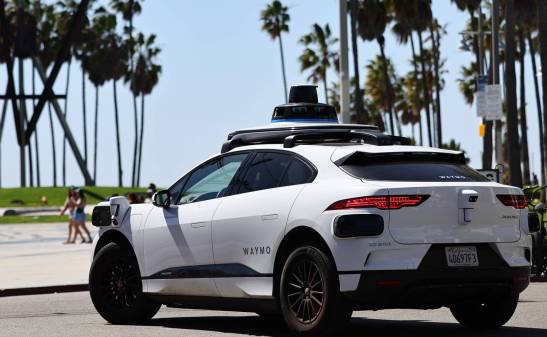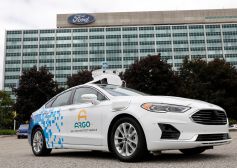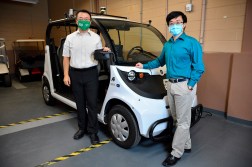Pedestrian survey finds ‘surprising’ acceptance of self-driving vehicles

Cyclist advocacy and education group Bike PGH released “surprising” survey results Tuesday revealing that the general public is relatively comfortable and permissive of self-driving vehicles, often even accepting the technology to be researched on their city’s public streets.
The survey responses showed a side of the public more accepting of self-driving vehicles than that indicated by a recent AAA study finding that more than 75 percent of drivers said they were “afraid” to ride in a fully self-driving car. Bike PGH’s survey mainly focused on the pedestrian and cyclist experiences and attitudes pertaining to self-driving vehicles, indicating if nothing else that people feel more comfortable outside of self-driving cars than in them.
The data — which is also housed within the Western Pennsylvania Regional Data Center for data wonk review — was collected to help city policy makers figure out how to integrate this emerging technology into the urban landscape. Bike PGH, a Pittsburgh-based group, collected the information from 1,119 mostly-local respondents, and including both members and non-members of the group.
“We’re at a crossroads,” a blog post from the group showcasing the data reads, “and the decisions that Pittsburgh leaders make will decide whether our cities conform to [autonomous vehicles] or if we make [autonomous vehicles] conform to the places in which we want to live.”
Hundreds of respondents reported having interacted with a self-driving vehicle while walking or on a bicycle. Most of those experiences were reported to have been either uneventful or positive. Respondents noted that self-driving vehicles were “very controlled and predictable” and “more careful than most [human] drivers would be.”
When asked to rate how safe they felt walking the streets, respondents generally reported feeling more safe knowing the roadways were filled with self-driving vehicles than regular vehicles.
Beyond everyday experience, 68 percent of general population respondents said they would either “approve” or “somewhat approve” of their city being used as a “proving ground” for self-driving vehicles, compared with 18 percent who “disapproved” or “somewhat disapproved.”
Also among the general population, 62 percent reported belief that the technology could reduce fatalities. Earlier this month, Boston called out reduced fatalities as a key driver behind the support of new transportation technologies like self-driving vehicles with the launch of a new comprehensive plan called Go Boston 2030.
Among the observed quirks of self-driving vehicles, several survey respondents reported incidents in which the vehicles ignored crosswalks, particularly at unsigned intersections. And while many noted the predictable nature of the vehicles, others reported feeling as though their bodies were treated as just another piece of the environment and that the vehicles were not considering that they might mistakenly or erratically enter traffic.
Others noted that while human drivers often courteously drift toward the center line to avoid cyclists using the bike lane, self-driving vehicles tended to “hug the line” next to the bike lane, in violation of Pennsylvania state law’s requirement of providing four feet of passing space.
Survey takers were also asked several questions about government regulation of the space, including issues of private-sector data sharing and vehicle speed caps. Overall, people were in support of some government regulation.
The same day the survey data was released, the Pennsylvania state the state House and Senate held a joint hearing to evaluate a potential framework — Senate Bill 427 — for testing and possibly deploying self-driving vehicles.
“Some of these benefits are many years away,” testified Carnegie Mellon researcher Raj Rajkumar. “However, highly autonomous vehicles will reduce the intensity of crashes and their negative outcomes sooner than many of us think.”
Rajkumar called for a framework that would be flexible enough to account for the fast-evolving nature of the technology.
The House Energy and Commerce Committee convened a panel on the topic in February to begin formalizing national guidance on autonomous vehicle technology that has already resulted in one high-profile death, that of Tesla Model S driver Joshua Brown on May 7 when he collided with a truck in Florida.
As more self-driving vehicles hit the roads — there are 27 companies operating 180 self-driving vehicles in California alone — regulators are faced with a growing host of questions on how the nation’s patchwork of laws, and lack thereof, can keep roads safe and perhaps even deliver on the technology’s promise of making them much safer.






